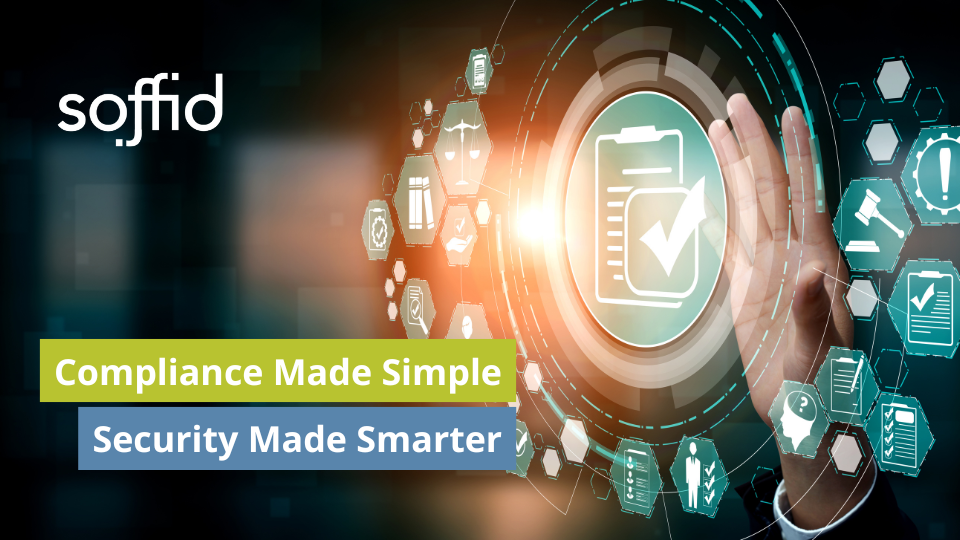
by Rebeca | Apr 1, 2025 | cybersecurity, iam, soffid
In the world of cybersecurity, small mistakes can lead to big consequences. And when it comes to identity management, even a minor bug—or a human error—can escalate into system-wide disruptions, affecting thousands of users or critical infrastructure.
At Soffid IAM, we believe that simplifying identity governance means eliminating errors before they become vulnerabilities.
Identity management: when a bug becomes a breach
A software glitch in a video game might be a harmless quirk. But in IAM, it can result in locked-out users, excessive access rights, or uncontrolled privilege escalation. In sectors like healthcare, finance, or public administration, these issues can lead to operational risks, data loss, or compliance failures.
What causes identity-related errors—and how to prevent them
-
Lack of specialized training
IAM is not just another IT function. It requires deep knowledge of each organization’s processes, systems, and the identity platform itself. Without proper training, engineers miss critical dependencies. That’s why Soffid empowers customers and partners through continuous enablement.
-
Limited testing environments
Relying on production environments for testing is a dangerous shortcut. Many organizations skip realistic test setups due to budget or time constraints, exposing themselves to higher risks. At Soffid, we encourage investing in pre-production environments that mirror real systems.
-
Unexpected third-party changes
In the cloud era, integrations can break overnight if a provider modifies their APIs or policies. This is why identity governance must be a shared responsibility across all IT stakeholders—and must be monitored proactively.
-
Poorly designed test scenarios
A common trap: testing what’s supposed to work, not what might go wrong. Thorough unit, integration, and user acceptance testing are vital. We’ve seen real cases where a missing “WHERE” clause disabled every user account instead of just one. The solution? Smarter testing.
From chaos to control, with precision and purpose
Identity security leaves no room for improvisation. At Soffid, we build environments where stability, traceability, and automation reduce human error and strengthen every access decision.
Our approach:
-
Train constantly
-
Create robust test environments
-
Involve every stakeholder
-
And above all: test with intention
Security without complexity. Identity without friction. That’s how Soffid IAM delivers control without compromise.

by Rebeca | Mar 25, 2025 | iam, soffid
Identity management is no longer just a matter of security—it’s a strategic lever for increasing productivity and simplifying complex processes. At a time when organizations are facing fragmented technological environments, multiple tools, and ever-changing regulatory requirements, having full control over who accesses what, when, and how has become a competitive advantage.
At Soffid IAM, we believe that identity governance should never mean added complexity. When companies simplify their access management models, they free up resources, reduce operational errors, and streamline internal processes. Fewer barriers, less friction, more efficiency.
Automating the identity lifecycle—from onboarding to permission revocation—is key to avoiding bottlenecks. How much time do teams lose waiting for manual approvals? How many hours does IT spend managing access on a case-by-case basis? With Soffid IAM, those efforts are significantly reduced thanks to intelligent workflows and a unified interface that puts control in the hands of those who need it—without unnecessary intermediaries.
And productivity doesn’t stop there. A well-implemented IAM platform prevents operational disruptions, ensures that users access their tools securely and without delays, and frees up technical staff to focus on higher-value strategic tasks. Because when access is agile, work flows.
The key lies in a converged and flexible approach, one that adapts to each organization’s pace. Some may need a full-featured deployment (IGA, PAM, AM), while others may require only a specific module. In every case, Soffid provides a solution that reduces complexity, improves efficiency, and boosts productivity without compromising security.
From chaos to control, without shortcuts or complications. That’s how we understand productivity in the world of identity management. Ready to simplify the complex?

by Rebeca | Mar 19, 2025 | Ciberseguridad, iam, open source, PAM, soffid
Cybersecurity is no longer about protecting a fixed perimeter. Organizations now operate in hybrid environments, employees access systems from anywhere, and non-human identities manage critical processes. In this new reality, Identity & Access Management (IAM) must evolve to provide security, control, and flexibility—without friction.
The End of the Perimeter and the Rise of Dynamic Identities
Traditional security models assumed that anything inside the corporate network was safe, while anything outside needed verification. That model is now obsolete. Today, access happens across multi-cloud environments, unmanaged devices, and AI-driven automation.
✔ 85% of security breaches are linked to compromised identities.
✔ 45% of organizations still rely on manual processes for access management.
✔ AI agents and bots now represent 30% of identities within enterprise infrastructures.
The challenge is clear: how to manage, secure, and audit identities without slowing business agility.
Smarter IAM: Security Without Friction
The evolution of IAM lies in solutions that anticipate risks, automate controls, and simplify user experience—all while strengthening security.
- Borderless identity governance: Soffid IAM manages both human and non-human identities with dynamic access policies.
- Adaptive authentication: Security based on real-time context, risk, and behavioral analysis.
- Controlled privileged access: With Soffid PAM, high-risk permissions are granted on demand, under strict supervision.
- Identity orchestration: Automated IAM workflows that reduce response times and minimize human errors.
A Future Without IAM Barriers
Organizations need security without roadblocks, vendor lock-in, or unnecessary complexity. With Soffid IAM, enterprises can operate with the confidence that every access is protected, every identity is controlled, and every security decision is backed by advanced technology.
Discover how Soffid IAM is redefining identity security in a perimeterless world.

by Rebeca | Mar 11, 2025 | Customer, cybersecurity, Finance, trends
The regulatory landscape in Europe is evolving, and the new Digital Operational Resilience Act (DORA) sets a new standard for financial companies. In a world where digital resilience is not just a competitive advantage but an essential requirement, Soffid IAM emerges as a strategic partner to navigate these challenges with security, efficiency, and simplicity.
DORA establishes a clear mandate: organizations must ensure operational continuity and the security of their digital systems against cyberattacks and operational failures. This involves having robust identity governance, protecting privileged access, and meeting stringent audit requirements. This is where Soffid IAM demonstrates its distinct value.
At Soffid IAM, we understand that identity management is key to regulatory compliance. It’s not just about securing access but doing so in a way that allows organizations to adapt quickly to new regulations without compromising operational agility.
A Trusted European Partner: Autonomy and Strategic Value
As one of only three European companies recognized by Gartner, Soffid IAM offers a distinct advantage to organizations seeking strategic autonomy within the EU. By choosing a European IAM solution, businesses avoid dependency on external vendors for critical financial operations, aligning with Europe’s vision for digital sovereignty.
Our “Made in Europe” approach is more than just a label—it’s a testament to our commitment to delivering worldwide solutions built with European expertise, technology, and innovation. Soffid IAM provides the financial sector with a robust, adaptable, and compliant identity management platform that meets both local and global standards.
Compliance Made Simple, Security Made Smarter
Soffid IAM enables companies to comply with DORA through:
- Comprehensive Identity Governance (IGA): Ensuring only the right people have access to critical systems, with detailed permission and access control.
- Privileged Access Management (PAM): Providing an additional layer of security for accounts with elevated privileges, minimizing the risk of unauthorized access.
- Identity Risk and Compliance (IRC): Facilitating audits and ensuring that identity processes meet the strictest regulations.
- Implementation Flexibility: Adapting to on-premises, cloud, or hybrid infrastructures to facilitate compliance regardless of the technological environment.
At Soffid IAM, we do not believe in one-size-fits-all solutions. Our modular and adaptable approach allows each organization to implement only the functionalities it truly needs, offering a personalized and effective experience.
The path to DORA compliance doesn’t have to be complex. With Soffid IAM, organizations can transform a regulatory challenge into an opportunity to strengthen their operational resilience, with a solution that simplifies security without compromising it.
Discover how Soffid IAM helps companies successfully navigate the new European regulatory environment and always stay one step ahead in security and compliance.

by Rebeca | Mar 4, 2025 | News, soffid
Security and efficiency in identity management are critical for any organization, and each sector faces unique challenges. At Soffid IAM, we transform digital identity into a strategic advantage: simplifying complexity, ensuring control, and maintaining compliance with tailored solutions for every industry.
Soffid IAM provides customized solutions for public entities, educational institutions, and private companies, helping optimize identity governance with security, scalability, and compliance.
Our impact translates into more efficient processes, more secure infrastructures, and a better user experience.
Digital Identity in Action: Inspiring Success Stories
- General Administration of the State (IGAE) Digitalizing and securing identity management, facilitating access to critical systems with reinforced compliance.
Result: Enhanced access control, reduced administrative workload, and minimized operational risks.
- Region of Murcia (CARM) Implementing a comprehensive identity management solution for the regional government, ensuring that only authorized users access essential information and resources.
Result: A centralized, more efficient identity system aligned with security regulations.
- National University of Colombia (UNAL) Implementing Soffid for Education to manage student and faculty identities, ensuring fast and secure access to academic platforms.
Result: Simplified access, automated processes, and an infrastructure prepared for digital growth.
- Financial Sector Protecting critical infrastructure by integrating Privileged Access Management (PAM) and identity control in hybrid environments in various financial institutions.
Result: Increased security in financial operations, fraud prevention, and compliance with global regulations.
In every project, we demonstrate that intelligent identity management with Soffid IAM not only enhances security but also drives operational efficiency and regulatory compliance.
Soffid IAM Makes the Difference
✔ Automation and Cost Reduction: Less manual management, greater efficiency.
✔ Security and Compliance: Aligned with standards like GDPR, NIS2, and ISO 27001.
✔ Flexibility and Scalability: Solutions tailored to each client, regardless of size or sector.
✔ Enhanced User Experience: Simplified access without compromising security.
Digital identity is not just about security; it is a strategic advantage. With Soffid IAM, we help companies and institutions worldwide protect their digital ecosystems seamlessly and with the confidence they need to grow.
Discover how Soffid IAM is transforming identity management in key sectors.






